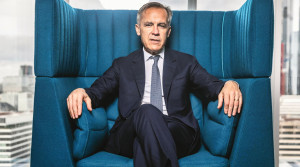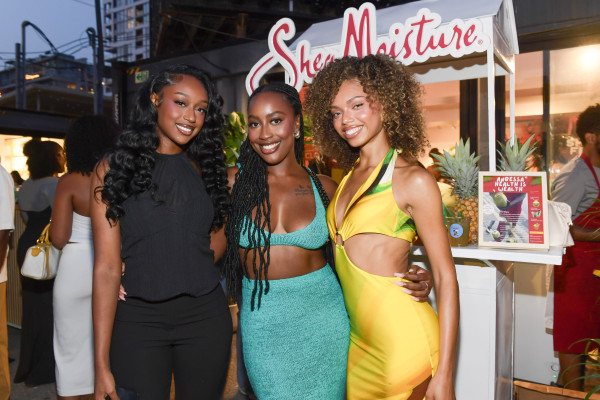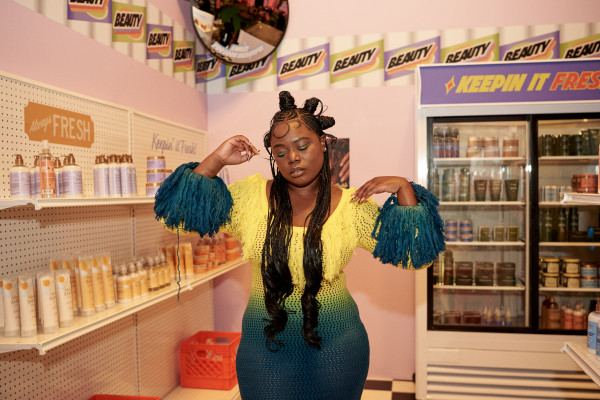I would walk into class with pride, intentionally and annoyingly swinging my fresh braids as I took my seat. The delight of feeling so pretty on Monday mornings was the prize after spending my Sunday afternoon sitting on the floor while my mom did my hair. I waited to show my friends that this time I had pink beads at the ends of my braids, or maybe colorful elastics at the roots.
My mom was the one who took me to school. Sometimes, as she handed me over to my teacher, she would adjust her hair beneath her oversized sunglasses. My mom had bangs; they were perfection on her relaxed, straight hair—carefully placed, big, bold, and so chic. On the other hand, my grandmother was always a claw-clip kind of woman. She had dozens of golden, intricately designed shiny ones that held her relaxed hair neatly in place, a testament to her classic elegance.
However they wore it, I grew up watching the women in my family take care of their hair. Now, years later, I wear my natural hair proudly, a vibrant symbol of community, pride, and beauty. It has been four years since my mom cut her then relaxed hair to wear her natural coils, and my grandmother beams with delight that I’ve never chemically straightened my hair.
For Black Caribbean women, hair is not only beauty but a symbol of identity and culture. In my home island, still grappling with the unfortunate legacies of French colonization, beautiful hair has always been defined by Eurocentric standards. Through three generations of women—my grandmother, my mother, and I—our stories mirror the struggles of Black women around the world to feel beautiful in a world that repeatedly tells them their very true selves cannot be.
My maternal grandmother, whom I affectionately call Madile—a contraction of 'Mamie,' the French word for grandma, and Odile, her first name—now has an entirely different perception of natural hair than earlier in her life.
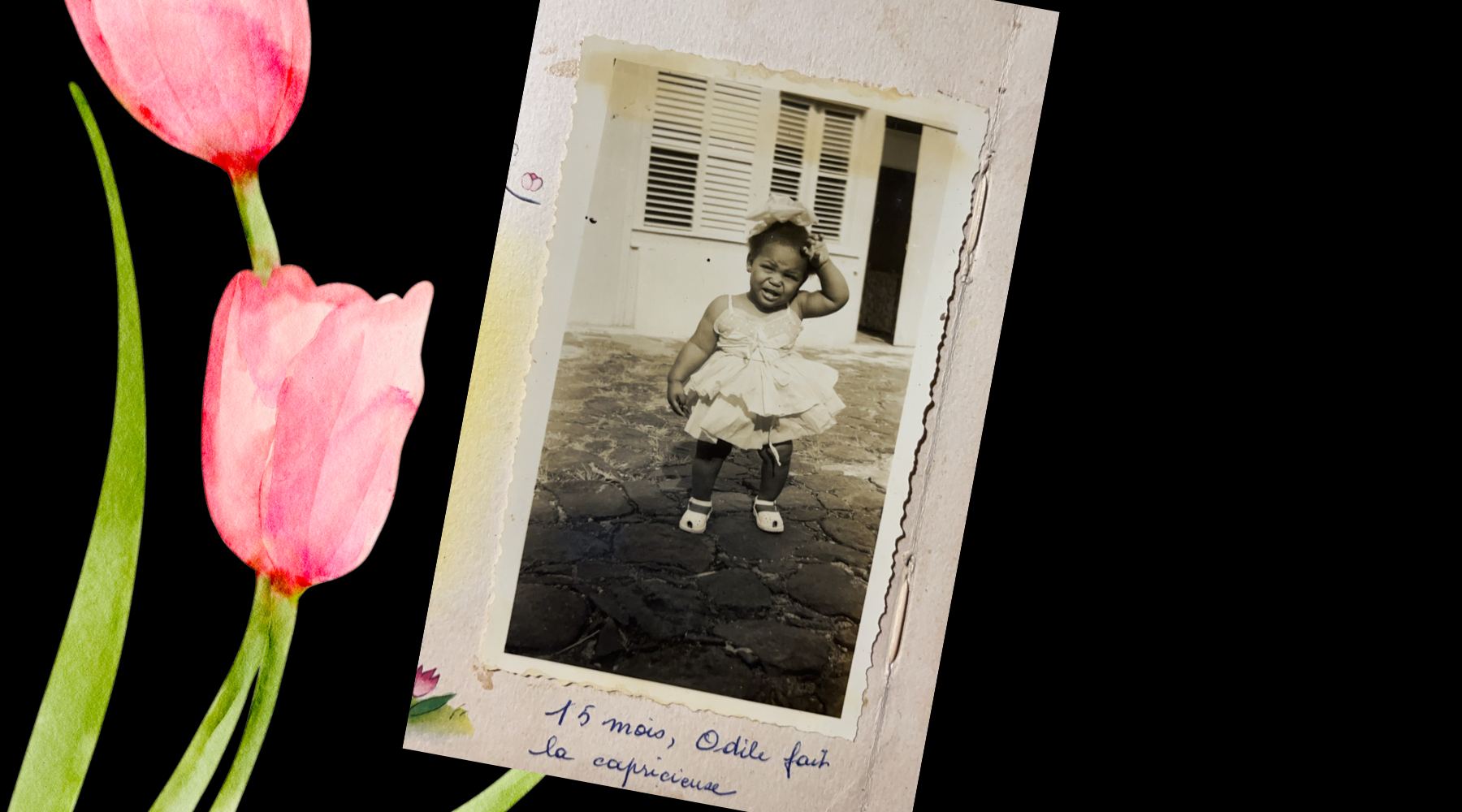 My grandmother Madile as a baby.
My grandmother Madile as a baby.
As a little girl, Madile loved getting her hair done. As she describes it, her mother pampered her before school every morning. At that age already, having her hair done meant feeling confident. Two neat braided pigtails, tied together by an elastic, this was Madile’s favorite hairstyle. Each morning, while her mom combed, parted, braided and arranged, she started feeling beautiful, a ritual that would later shape how she approached my mother’s hair care.
Around 14 or 15 years old, like all the other girls her age, Madile chemically straightened her hair for the first time. This shift towards chemical treatments can be traced back to 1909, when Garret Morgan developed relaxers while working on sewing machines. In an attempt to invent a new lubricating liquid for the machine needle, Morgan wiped his hands on a wool cloth, returned the next day and found the wooly texture of the cloth had smoothed out, a pivotal point that would alter Black hair care for generations.
Relaxers are harsh chemical treatments that attack the natural structure of curly and coily hair in order to achieve a straighter look, marketed as more manageable and desirable. Madile grew up hearing how impossible it would be to take care of her own natural coily hair. “My sister, [who had a looser hair texture], they would tell her, ‘You have beautiful hair, but Odile...there’s nothing to do,’” she says.
As a little girl during the 1960s, hair was already a symbol of beauty for Madile; she watched with admiration as women twisted their thick hair into neat chignons. She holds lovely memories of her mother braiding her hair every morning before school. Black hair in the Caribbean has also now, for a long time, meant pride, for generation after generation. I grew up hearing the quality of the West-Indian mother was measured by the neatness of her daughter’s braids on a Monday morning.
“For me [a child with their hair done], it’s a sign of cleanliness; it’s a child who is taken care of whose head is always neat,” Madile says. This attention and care around young Black girls’ hair did not prevent generations from damaging children’s natural hair. Madile’s mom only used beef marrow or black castor oil on her daughter’s hair. Years later, they both realized these products were asphyxiating her hair. “My mom, when she understood, told me, ‘I spent my life conscientiously damaging your hair’,” Madile says.
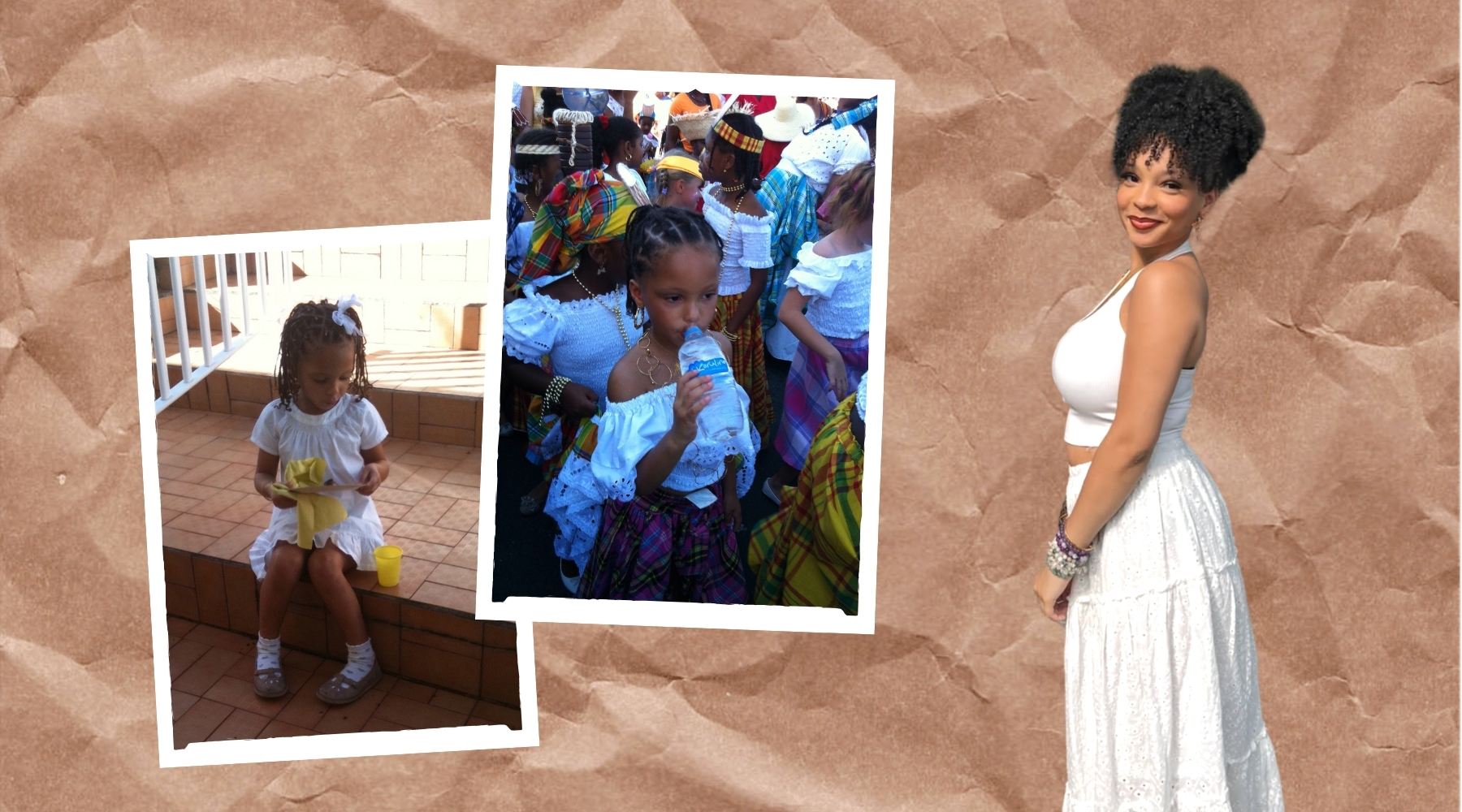 Left, me as a child growing up in Guadeloupe.
Left, me as a child growing up in Guadeloupe.
Historically, many hair care products designed for Black hair contained heavy ingredients like petrolatum and mineral oil, typically for the shiny look they provided as well as their capacity to make Black hair look “neater,” an idea entirely based on Eurocentric beauty standards. Madam C.J. Walker’s Wonderful Hair Grower was groundbreaking when she launched it in 1905 in the United States; the focus on products for Black women was activism in itself at the time. According to the National Museum of African American History and Culture, Walker’s products not only transformed hair care but also paved the way for Black female entrepreneurship. The ingredients like petrolatum, carbolic acid, or copper sulfate, however, are now known to be too clogging to actually provide the moisture and hydration Black hair needs. They coat the hair in a way that makes it hard for it to absorb the hydration.
Dixie Burke is a natural hair specialist with over 20 years of experience doing Black hair in Toronto. “We didn’t know how to take care of our hair; we were using all the wrong stuff, all the wrong products,” she says.
When she was about 15 years old, Madile chemically straightened her hair for the first time. This is during the rise of the Black Power Movement, when Black women in North America turned away from Eurocentric beauty standards for the first time by wearing natural hair afros as a symbol of confidence.
Yet in the Caribbean straight hair was the only plausible option for Black women. When Madile fell in love with my grandfather at 18, he had an afro, like a lot of Black Caribbean men, but the standards imposed on women were drastically different. After the first time she relaxed her hair in the 70s, Madile has never worn her completely natural hair ever again. Today, Madile gets her hair professionally relaxed once every three months, a significant reduction from the monthly treatments that were part of her life for so long. Nowadays, although bothered at times by too much textured new growth, she privileges healthier hair, “It’s your mom who explained to me that I was basically wrecking my hair every month,” she told me.
Like her mother before her, Madile cared for her daughters’ natural hair with love and devotion, though unknowingly perpetuating the wrong methods. My mom’s hair was taken care of as a child between heavy wheat germ oil treatments and burning off the strands sticking out of her braids. Madile put so much effort into her daughter’s hair that, ironically, my mom grew up thinking her natural hair was “little.” She would see her mother plait her hair every weekend, oil it every Wednesday, and still, her hair was not growing; it was not long; she couldn’t wear it down. She simply came to the conclusion that her hair must not grow because of how coily it was. It was normal.
In 1992, at 13 years old, my mom chemically relaxed her hair for the first time. “At the time, relaxing your hair was like having your period; it’s a transition from the young girl to womanhood,” she explains. The use of this alkaline cream for Black women went beyond visibly straight hair; it was an external sign of wealth and a beauty symbol regardless of the health of your hair. “You had to have relaxed hair, even if it was breaking off, ugly, or unhealthy,” my mother says. More than this, relaxed hair was a synonym for independence; it was the key to not looking like a little girl anymore, to not having your mother do your hair for school anymore. But for Black girls, independence, confidence and conformity came with a price. A few years after her first relaxer, my mom had to completely cut her hair into a short pixie cut. Relaxers on the market were so strong, sold without any moisturizing aftercare, and had caused her to experience balding in the entire back of her head. There were times when, for the two days following her monthly relaxer, my mom was in bed, feverish, trying to heal the suppurating plaques on her scalp caused by a relaxer burn.
Black American beauty trends in the late 90s had a huge influence on Black women’s hair in the Caribbean. At this time, if you were a Black girl who didn’t want to watch exclusively white television, there was only one channel: BET (Black Entertainment Television). Between music videos, sermons and sitcoms like Moesha, the only other Black girls that Guadeloupean ones could see were American girls. So when she turned 18 during that time, my mom began having fun with her (still relaxed) hair and extensions. In her own words, she tried everything. She wore weaves, box braids, micro braids, picks and drops, and more. Empowered and confident about her hair, my mom describes herself at that time as halfway between the famous singers of “That Boy is Mine,” Brandy and Monica. “At that time I am sublime. I am the archetype of the sexy Black woman,” she tells me, laughing.
In the early 2000s, Black women in Guadeloupe started to wear their natural hair out without saying anything about it, without vocally expressing what it means. It was like watching a protest, except the people are mute; their very existence is shaking up the norms. “It’s this sort of political act that you do daily without saying, ‘This is what I reject,’” my mom explains. A movement on the island had quietly started.
A few years later, The Natural Hair Movement gained significant momentum in the 2010s, fueled by a surge of bloggers and YouTubers dedicated to sharing tips, tutorials, and the cultural significance of embracing natural hair textures. While this movement inspired many, my mom did not contemplate wearing her natural hair just yet; instead, she focused on learning to care for her relaxed hair. She found ways to maintain its health, spacing out her relaxers and discovering that her chemically straightened hair could be long and full. In doing so, she began educating her mom and sister on how to properly care for relaxed hair while still celebrating its beauty. The narrative around Black hair in mainstream society was finally shifting.
My mom had me, her first daughter, in 2006. She prayed for a head full of hair, and well, I was born looking like a coconut. My mom would hold the very few strands of hair on my head with her teeth to tie gigantic ribbon bows around what she delusionally called a ponytail on me. But when my hair finally grew at one, it grew big, it grew long, and it grew thick. Her prayers had been answered. My mom had actually always thought natural hair in general was beautiful—but remember, to be beautiful, it had to be full, thick, and long. Because she didn’t see her own natural hair this way; she had simply never thought of it as an option.
{https://www.instagram.com/p/C92MrdYRdid/?igsh=MTdud2NvanNscWQyYw%3D%3D}
As the first baby of the family in Guadeloupe, I was constantly surrounded by voices of affirmation. My mother, aunt, grandmothers, and family friends all celebrated the beauty of my hair. I believed them; I thought I looked beautiful. But when we moved away from Guadeloupe to Reunion Island, where people who look like me aren’t the norm, my perception changed. No one in school had braids on Monday mornings anymore; at birthday parties, no one understood I couldn’t jump in the pool because my mom had just done my hair for the party. Whenever my dad brought me back home, my mom would eagerly ask, ‘How did it go? Did your friends like your hair?’ Each time, I said what would have been right—that all the time she spent pampering me was recognized and that yes, everyone loved it. In all honesty, I don’t even think my friends thought my hair looked inherently bad; they just did not even think about it as something that could be beautiful. I started to feel my hair’s beauty was only recognized among Black people or in the comforting embrace of the Caribbean. I grappled with this unsettling thought that its beauty was circumstantial only, depending on where I was.
At around 11, one day, I asked my mom to take me to a salon for what we called ‘a 'brushing'—essentially blow drying your hair as straight as possible—because all my friends had said they wondered what I looked like with straight hair. As she looked at me, I could see her heart break. “I thought I had failed everything, that because my hair was relaxed, I had completely perverted your perception of a Black woman’s hair,” she tells me today, her eyes filled with tears. “I thought I had cherished your hair enough.”
But she took me there anyway. I sat in that chair for what felt like an eternity, my ears burning from the scorching air that the stylist affirmed was necessary to ‘tame’ my hair. When my mom returned and asked ‘Do you like it?’ I couldn’t help but feel like a stranger in my own reflection. I couldn’t admit that I had fought so hard to get here only to feel lost. So, I nodded, and replied softly, ‘Yes.’
The “big chop” refers to the process of cutting off all relaxed hair, therefore embracing one’s natural hair texture. For many Black women, it’s a transformative moment of reclaiming identity and self-love. In 2021, at 41 years old, my mom did a big chop. She describes a shift in her mind: “I started to feel hypocritical to tell you how beautiful you guys [my two little sisters and I] and your hair were while mine wasn’t natural." The woman who had told me I had the most beautiful hair in the world for my whole life felt like she was not practicing what she was preaching.
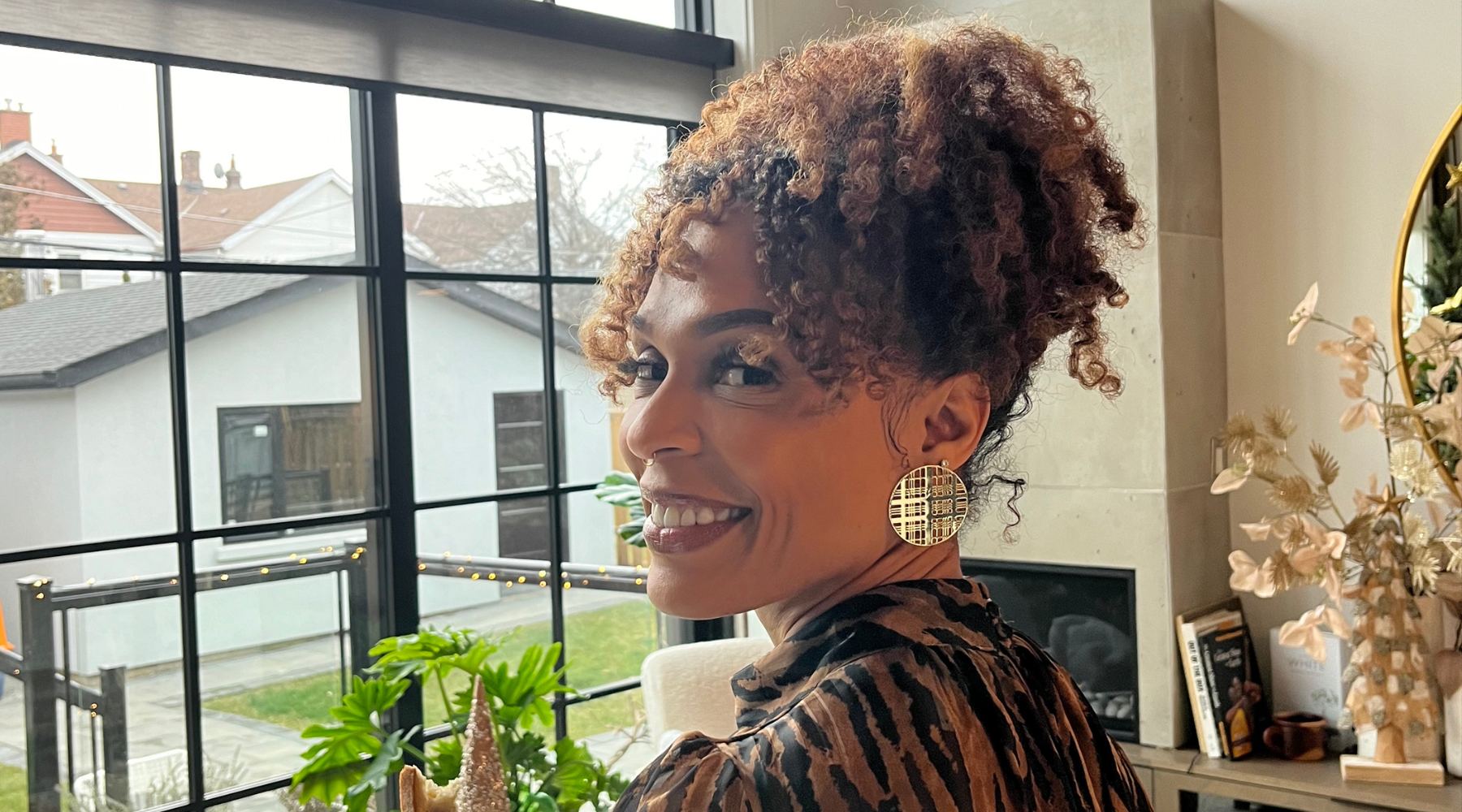 My mother wearing her natural hair.
My mother wearing her natural hair.
“Do you still think your hair is hard to manage?” I asked. "Oh, absolutely not!” she says, “I am the laziest of the naturalistas in the world.
In the middle of grade ten, quarantine started. The combination of long months at home and the ever-increasing amount of natural hair tutorials and videos in 2020 created the perfect circumstances. Like many other teenage Black girls, I learned how to do my hair. I figured out what my defined curls look like for the first time, my hair’s porosity, or how I could wash my hair without it taking three hours. It was fun, it was exciting; it was almost like I was discovering my real hair and what it could do for the first time in my life.
Today, at 18, my hair brings me closer to other Black girls; it makes me feel beautiful; it makes me feel proud. Yet, like many Black women my age, I still struggle with trying not to attribute the majority of my beauty and femininity to it. I still tend to feel like if my hair isn’t how I like it, I can’t look pretty. But the depth of my knowledge about Black hair has radically changed the way I take care of it.
One day, I'll have a daughter. On Sundays, I’ll do her hair. And with each braid, twist, and stroke of the comb, I will be nurturing a legacy—one that generations of women before you have changed and adapted with love, and with the knowledge they had.
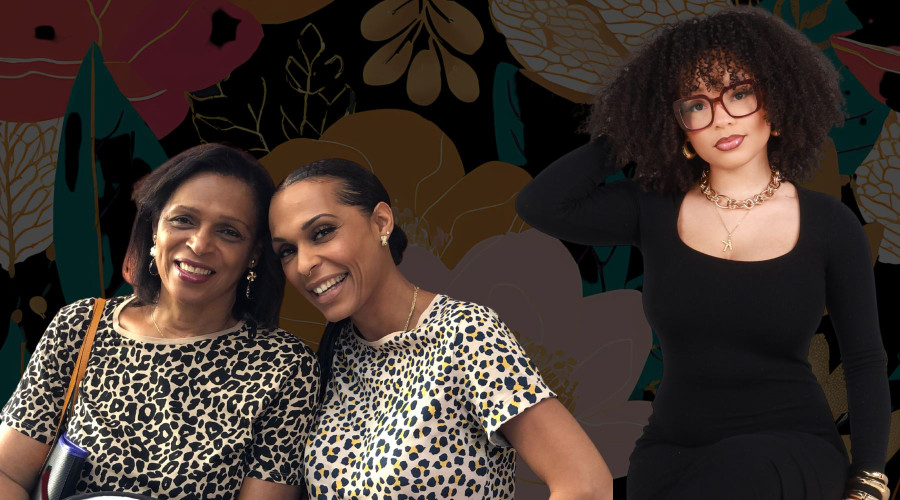
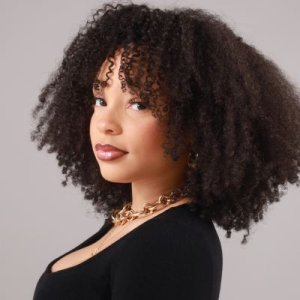 By
By 





